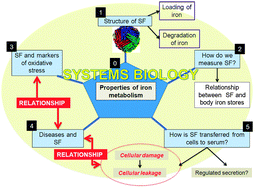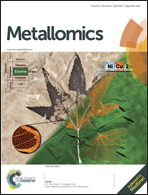Serum ferritin is an important inflammatory disease marker, as it is mainly a leakage product from damaged cells
Abstract
"Serum ferritin" presents a paradox, as the iron storage protein ferritin is not synthesised in serum yet is to be found there. Serum ferritin is also a well known inflammatory marker, but it is unclear whether serum ferritin reflects or causes inflammation, or whether it is involved in an inflammatory cycle. We argue here that serum ferritin arises from damaged cells, and is thus a marker of cellular damage. The protein in serum ferritin is considered benign, but it has lost (i.e. dumped) most of its normal complement of iron which when unliganded is highly toxic. The facts that serum ferritin levels can correlate with both disease and with body iron stores are thus expected on simple chemical kinetic grounds. Serum ferritin levels also correlate with other phenotypic readouts such as erythrocyte morphology. Overall, this systems approach serves to explain a number of apparent paradoxes of serum ferritin, including (i) why it correlates with biomarkers of cell damage, (ii) why it correlates with biomarkers of hydroxyl radical formation (and oxidative stress) and (iii) therefore why it correlates with the presence and/or severity of numerous diseases. This leads to suggestions for how one might exploit the corollaries of the recognition that serum ferritin levels mainly represent a consequence of cell stress and damage.


 Please wait while we load your content...
Please wait while we load your content...